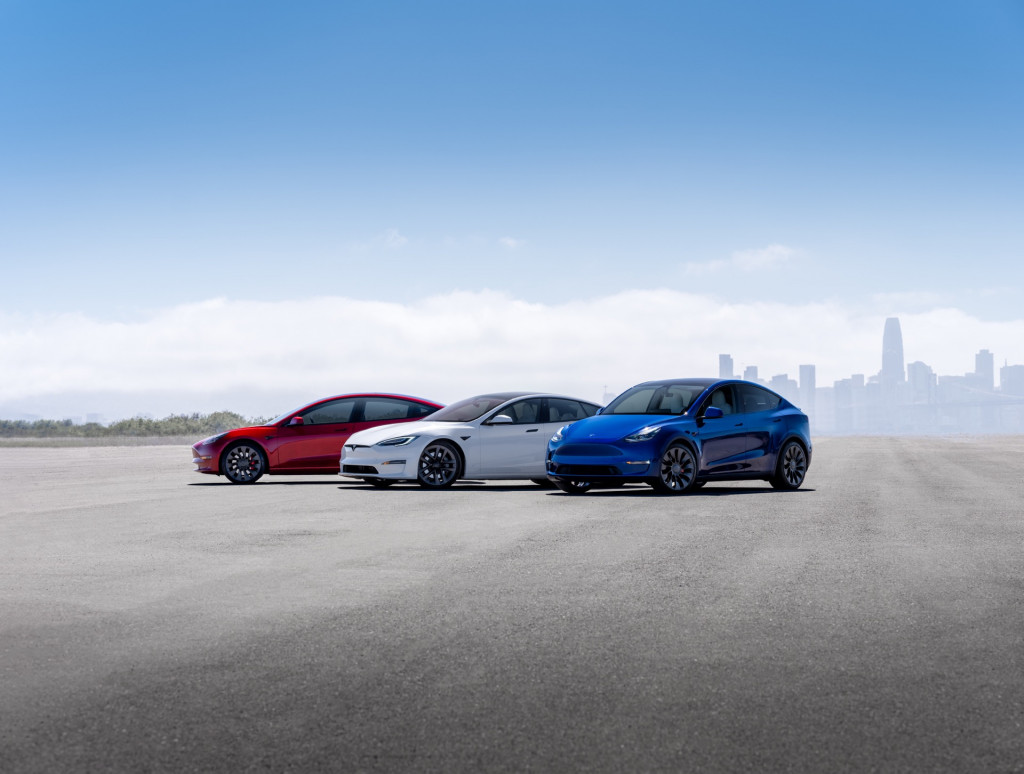Tesla earlier this week recalled 594,717 vehicles for an issue with its “Boombox” feature that left it potentially noncompliant with federal pedestrian safety requirements.
The recall—and over-the-air fix—are essentially a “do-over” for Tesla, now making the cars compliant as long as they're moving.
Tesla’s Boombox feature was introduced in December 2020, and it allows drivers to play their choice of sounds outside their vehicle, in place of a normal car horn.

2022 Tesla lineup (Courtesy of Tesla, Inc.)
In the issue, which relates to 2020-2022 Tesla Model Y, Model X, and Model S, as well as 2017-2022 Model S vehicles, the Boombox interferes with National Highway Traffic Safety Administration (NHTSA) “quiet car” rules, which apply to electrified vehicles at speeds up to 18.6 mph.
The rules have led to a number of creative solutions from automakers for hybrids and EVs—with some, including Ford, creating a “designer” sound that’s distinctive to the brand’s vehicles.
The new recall campaign, posted earlier this week, closely parallels one issued in February—and it rolls out an extended solution. It covers a somewhat higher number of vehicles—likely simply bringing the documents up to date with deliveries.
The firmware fix sent to cars over the air after the last recall didn’t fully remedy the issue, as it allowed the feature to be used in “Park” or during Summon or Smart Summon functions. In the latter scenarios, the vehicles might potentially still not be compliant with the federal rules.
![Tesla Model 3 Enhanced Summon video still [by YouTuber Nagaraj Kelageri] Tesla Model 3 Enhanced Summon video still [by YouTuber Nagaraj Kelageri]](https://images.hgmsites.net/lrg/tesla-model-3-enhanced-summon-video-still-by-youtuber-nagaraj-kelageri_100696119_l.jpg)
Tesla Model 3 Enhanced Summon video still [by YouTuber Nagaraj Kelageri]
Tesla clearly states that Smart Summon, in which the car works with the mobile app to be maneuvered out of parking spaces, is to be used only on private property, not on public roads.
As with a number of recalls issued by Tesla, the announcement is just a formality of what’s already been remedied over-the-air, and no physical fix or service visit is needed. A firmware release sent to cars on March 31 fixed it already.













